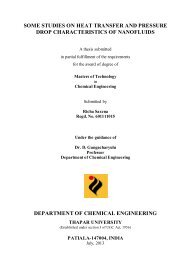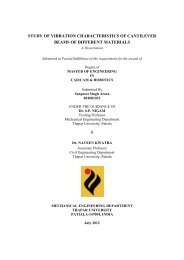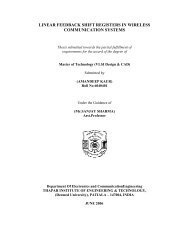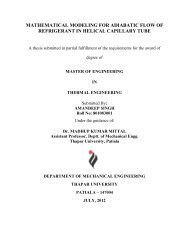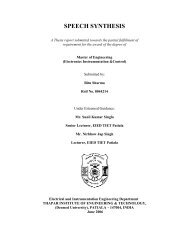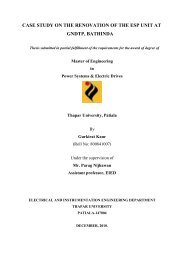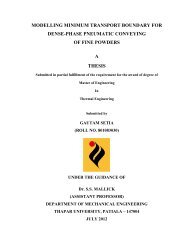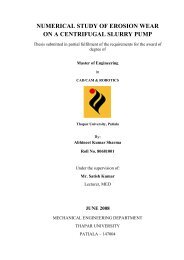from indigenous fermented foods and human gut ... - Thapar University
from indigenous fermented foods and human gut ... - Thapar University
from indigenous fermented foods and human gut ... - Thapar University
Create successful ePaper yourself
Turn your PDF publications into a flip-book with our unique Google optimized e-Paper software.
122<br />
Chapter V Discussion<br />
Lactobacillus is a normal inhabitant of the <strong>gut</strong> ecosystem (Tannock, 1999), <strong>and</strong> therefore it is<br />
not surprising, that they possess the capability to sustain conditions of <strong>gut</strong>. The strain L.<br />
casei, which was originally isolated <strong>from</strong> the <strong>fermented</strong> milk, is a known probiotic strain that<br />
is commercialized in country including india. This could also be an interesting alternative for<br />
developing a probiotic product without milk constituents using the L. casei strains<br />
characterized in this study. However, the two selected L. delbruckeii strains isolated <strong>from</strong><br />
Kharoli, were present in low numbers in this product <strong>and</strong> were not representatively important<br />
as predominant species in the microbiota of this traditional <strong>fermented</strong> food.<br />
L. casei LAM-1 survived under low pH conditions for five hours <strong>and</strong> well tolerated<br />
bile acids under in vitro conditions even at concentrations higher than those previously used<br />
by other authors (Jacobsen et al., 1999; Fernández et al., 2003). Acid tolerance of bacteria is<br />
an important factor to assure their resistance of gastric stresses <strong>and</strong> also for their use as<br />
dietary adjuncts in acid <strong>foods</strong> such as yoghurt.<br />
Resistance to bile salts is considered as an important property for strains to be used as<br />
probiotics, however, there is still no consensus about the precise concentration to which the<br />
selected strain should be tolerant. The physiological concentration of bile acids in the small<br />
intestine varies <strong>from</strong> 5 to 20 mM/l (Hofmann, 1991). Therefore, a concentration of 0.5% ox-<br />
gall, equivalent to 12.25 mmol/l bile acids was used in this study, as was also previously done<br />
by Kociubinsky et al. (1999). This concentration is higher than the ones (0.3% <strong>and</strong> 0.15%)<br />
previously used by other investigators for judging bacterial probiotic properties (Chou <strong>and</strong><br />
Weimer, 1999; Zarate et al., 2000; Fern<strong>and</strong>ez et al., 2003).<br />
Another test for resistance to intestinal conditions used in this study was resistance to<br />
0.4% phenol. Phenols may be formed in the intestine as a result of the bacterial deamination<br />
of some aromatic amino acids derived <strong>from</strong> dietary <strong>and</strong> endogenous proteins. These



